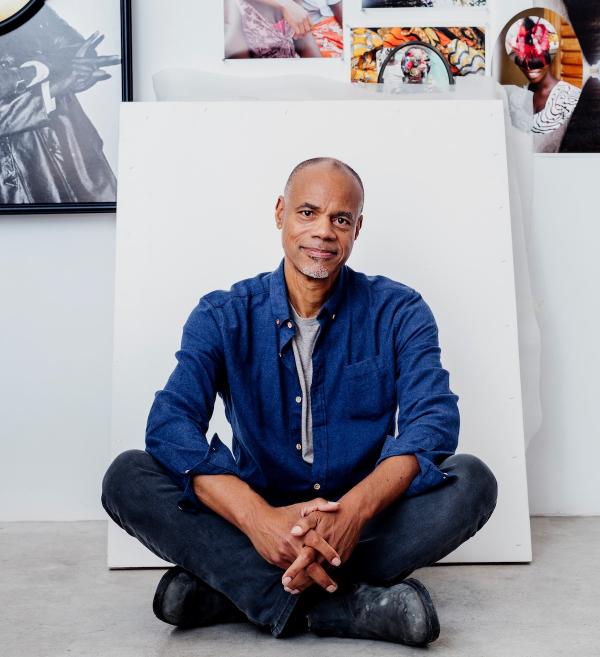Todd Gray (b. 1954, Los Angeles, CA) works in photography, performance, and sculpture. He was awarded a Rockefeller Foundation Bellagio Residency in 2016 and a Guggenheim Fellowship in 2019, and taught for more than 20 years at Cal State Long Beach. This art-world activity is only half of his resume, however.
Growing up in L.A.’s Fairfax district, he picked up a camera in junior high school. At age 17, Gray and his camera joined the Rolling Stones' “Exile On Main Street” tour. Ray Manzarek of The Doors advised him to go to art school. After receiving a BFA at CalArts in 1979, Gray continued to work in the music industry, with Michael Jackson among others, and returned to CalArts to earn an MFA in 1989. Absorbing theories of representation and race, he looked at his photographs of Jackson in a new way—as depictions of internalized colonization. During a 1992 trip to Ghana to direct a video with Stevie Wonder, Gray was struck by the musician’s comment that both of them may have roots in Ghana, because it was a direct route to the Caribbean and Eastern seaboard. Wonder said: "You need to come back home and you need to build a home.” Ten years later, Gray did so, and now he and his wife, artist Kyungmi Shin, split their time between Los Angeles and Akwidaa, Ghana.
Gray’s work is as multifaceted as his biography. He creates three-dimensional assemblages of framed photographs, highly tactile and rich in texture and color. The collected imagery is a combination of his own photographs—landscapes, portraits, architectural details—and photographs from his music archives and art history texts. In recent series, he interrogates art history and its powerful hold on the Western imagination. Without denying the beauty of classical forms and structures, Gray contrasts them with the lived experiences of those who are denied representation there, specifically the African peoples who were colonized and enslaved.
LACMA’s aim in the David Geffen Galleries is akin to Gray’s in that we wish to propose new ways of thinking about the origins and circulation of aesthetic ideas and objects across place and time. Deploying our collections cross-departmentally, we are discovering heretofore unrecognized continuities, but also gaps and absences. Artists have long realized that where no archives were formed or preserved, they have to make them.
Gray’s work imagines, from a personal, 21st-century perspective, what an archive of Afro-Atlantic transit could look like. Gray’s approximately 27-foot-long commission would invite visitors to rethink art history. “I work against preconceived notions of representation,” Gray states. “I want to offer new representational narratives, or new narratives of representation, because the old ones are restricting, confining—I offer something that’s expansive.”
During our 38th annual Collectors Committee Weekend (April 27–28, 2024), members of LACMA's Collectors Committee generously helped the museum acquire 10 works of art spanning a breadth of eras and cultures. Read more about all the acquisitions.



